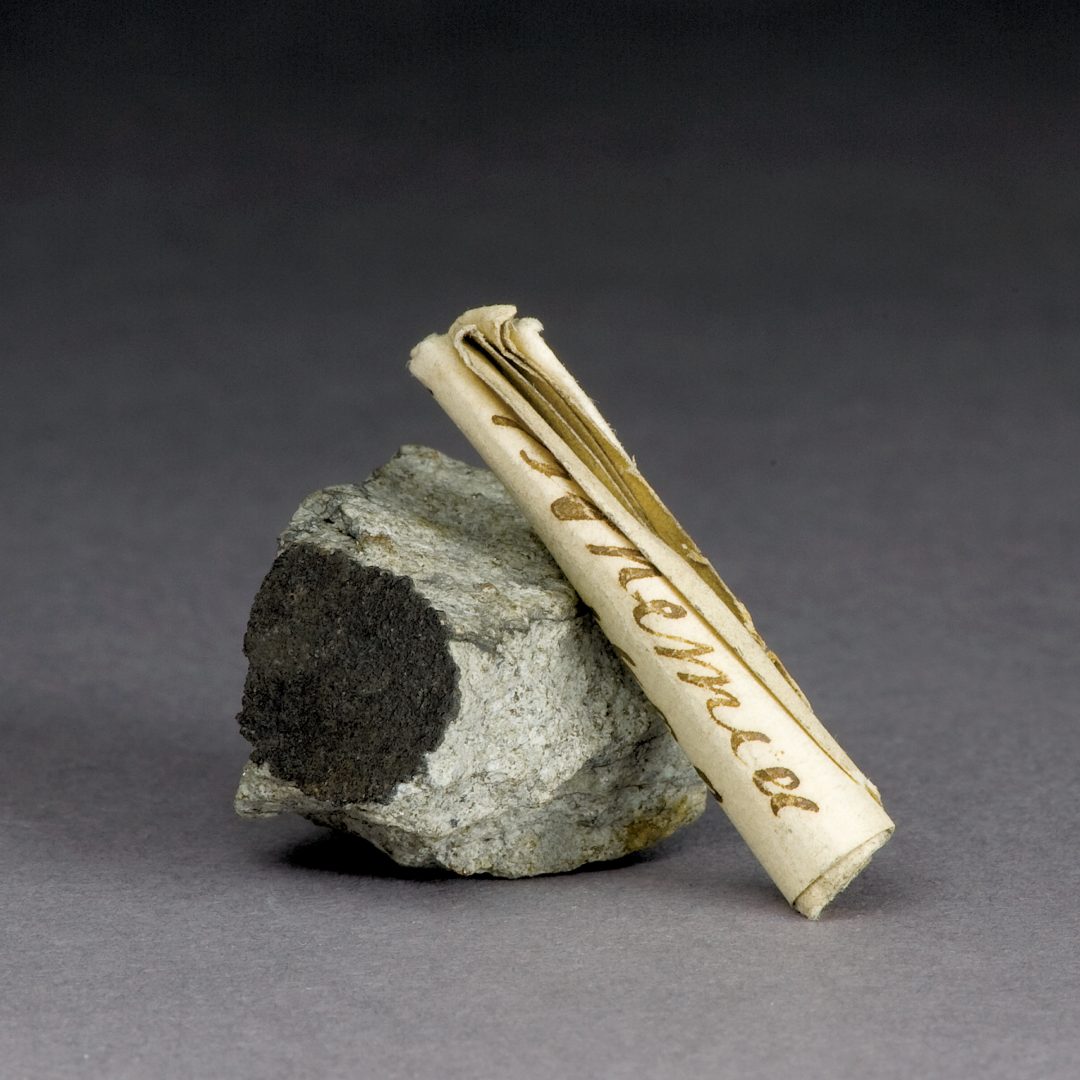Lissa
Note: While we usually feature a meteorite that's fallen in the current month, our Curator, Dr. Laurence Garvie, liked this photo so much that we decided to share it now, rather than waiting.
Lissa is an ordinary (L6) chondrite that fell at 3:30PM on September 3, 1808, in what is now the Czech Republic, near Prague. At the time of the fall, the area was under the reign of the first Austrian Emperor, Francis I.
According to von Schreibers (1808), the Lissa meteorite fall was observed during the afternoon of a clear warm day, and witnesses described what sounded like 3-4 canon shots, followed by what they mistook for gunfire, and then a high-pitched whistling. Some even compared the meteorite’s fall to an orchestral crescendo with drumroll and violins.
In 3 nearby locations, field workers observed heavy stones moving quickly through the air, and landing with audible thumps and visible dust clouds. Upon walking over to investigate, each group discovered a dark black stone embedded approximately “4 fingers” (~3.5 modern inches) deep in the ground, and cool to the touch. Two of these stones were broken up and distributed among the finders. In total, over 26 pounds of material were recovered, and a fourth stone was found a few days later in a wooded area.
The Lissa fall was extremely well-documented, in great part because it occurred just months after the Stannern meteorite fall, and in the same region. The largest of the stones (~6 lb) was taken to the government bureau in Lissa, and an official opened an inquest into the meteorite fall, with written witness statements. The resulting report was sent to additional government offices, and a scientist was dispatched for further research on-site.
Interestingly, the renowned Count Alois von Beckh Widmanstätten (director of the Austrian Imperial Porcelain Works and namesake of the Widmanstätten pattern seen in certain iron meteorites) was also contacted for additional research into the Lissa meteorite.

Photo by Dr. Laurence Garvie and copyright ASU/BCMS.